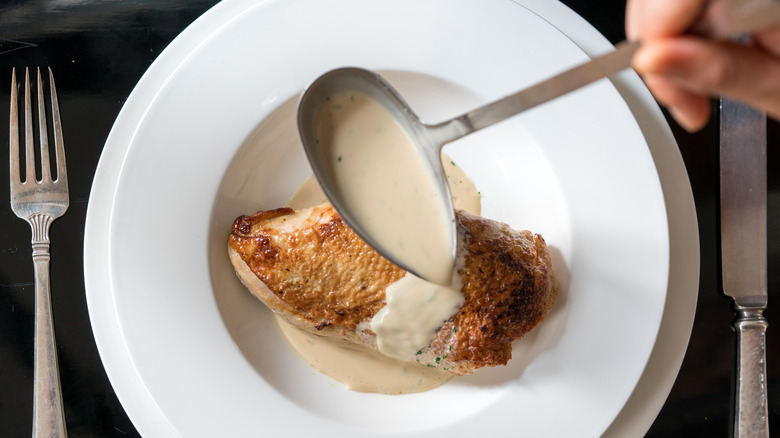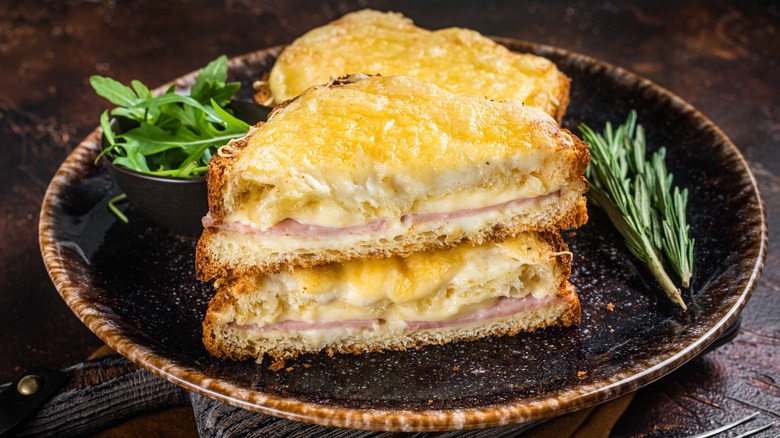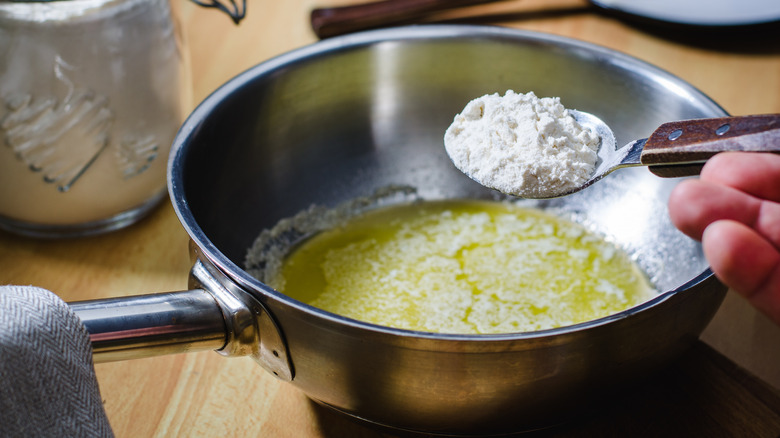Velouté Vs Béchamel Sauce: What's The Difference?
One of the core tenets of French cuisine is that a chef should attempt to stick to simple cooking whenever possible. Famous French chef Auguste Éscoffier once said, "The greatest dishes are very simple." Many of the other basic guidelines seem to only bolster this culinary philosophy. For example, someone making French food is advised to be fully cognizant of the preparation techniques they ought to be using. Furthermore, the cook in question should stick to cooking methods like poaching and grilling, which serve to showcase, rather than mask, your chosen ingredients.
These core culinary notions, in addition to others, have allowed France to become a major player on the world culinary stage. Another French rule of thumb revolves around enhancing the flavor of one's dish by including a sauce. As such, knowing that the difference between two simple sauces — velouté and béchamel — is merely the use of stock in the former and dairy in the latter, is of the utmost importance.
Béchamel and velouté distinctions
Both velouté and béchamel sauces begin with making a roux. Once a roux has been formed, you can decide to make either béchamel or velouté by changing a single ingredient: cream or stock. Creating an entirely different mother sauce is truly that simple.
A traditional béchamel sauce from the 1700s called for cooks to collect the often discarded produce refuse, like onion skins and potato peels, and sauté this with butter, herbs, and seasoning. Modern recipes, on the other hand, often include cream. A béchamel sauce can serve as the basis for a delicious homemade mac and cheese, or you can go in a different route, and opt to make a croque monsieur with béchamel soaked bread. Béchamel can also be the centerpiece of homemade lasagna recipes.
While béchamel sauce always includes a dairy element in some capacity, velouté, on the other hand, transforms the aforementioned roux by whisking in a stock of some sort, ultimately transforming it into a thick sauce with a velvety consistency. However, it isn't necessarily used often in its purest form. More often than not, it serves as the starting point for other savory sauces, like gravies, thick mushroom sauces, and even flavorful seafood sauces. The sauce can also serve to mellow out the flavors of bold dishes such as red meat.
The backstory of both béchamel and velouté
When delving into the differences between these two sauces, it's important to note that both are included among the five French 'mother' sauces, a selection of sauces that serve as the basis for countless meals across a wide variety of culinary traditions. A discussion of French sauces would be incomplete without once again giving credit to French chef Auguste Escoffier and his seminal cookbook, Le Guide Culinaire, a gargantuan tome featuring over 5,000 recipes, which can still be found on the bookshelves of chefs the world over.
Arguably the most important facet of the book is the introduction of 'mother' sauces, which includes both béchamel and velouté. However, Escoffier's original list included only four 'mother' sauces, and it was only expanded when Hollandaise was added. Hollandaise is oftentimes referred to as a 'daughter' sauce, and in place of a roux, it is whipped together using emulsification, wherein egg yolk is used to bring ingredients together.


